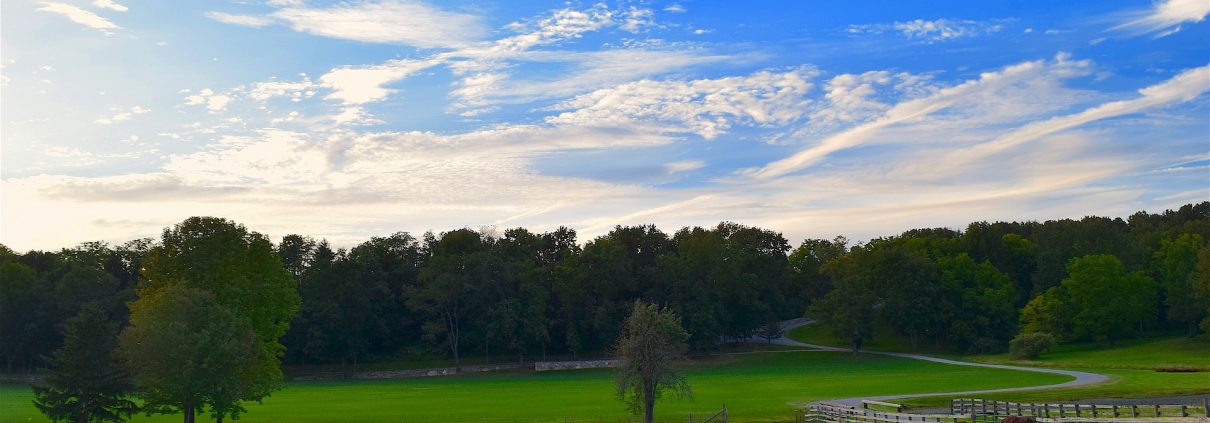Transitional Land: Finding The Highest & Best Use
Land. A word some commercial agents fear and some see as an opportunity. Make sure you are one of the latter. While some agents hesitate when they see a property come up involving land, like a vacant lot or tract of farmland on the outskirts of an urban area, savvy agents know that these can be diamonds in the rough awaiting discovery. Transitional land real estate properties are just that and being able to identify and properly market these types of properties can be quite lucrative.
THE DIRT ON TRANSITIONAL LAND
The purpose of a real estate brokerage is to sell a property at its market value and earn a reasonable profit for the client, as well as for the agent assisting with the transaction. In traditional real estate brokerage, the agent lists an existing property with a known use and markets that property to the users for that type of property. What makes Transitional Land properties different is the need to determine the market value accurately and then market the property according to its highest and best use, which is different than its current use, in order to increase the property’s value and thus the profit.
It is optimal for an agent listing either a residential or commercial property to utilize a comparative market analysis (CMA) to bracket the price range within which the property should sell. Then, working with the seller, the agent determines an asking price and prepares the seller to accept a sales price in this range. Whether you’re a commercial specialist working with a strip center or an industrial specialist working on a warehouse listing, there are comparable sales in the market place to utilize in determining and estimating the market value of the property to be listed.
THE DOWN-LOW ON HIGHEST & BEST USE
What makes transitional land a unique area of real estate brokerage is the fact that the ultimate use of the property might not be easily recognized. In fact, the very nature of transitional land is that the highest and best use is dynamic. Typically, when we think of transitional land, we think of an agricultural property whose highest and best use changes to commercial. Everyone can envision the new big box development being built on the land that was farmer Brown’s pasture. However, properties can also transition from one commercial use to another or from agricultural to industrial or recreational. While we normally think of a transitional property increasing in value because it has changed to a more profitable use, we sometimes see values decrease as neighborhoods deteriorate or governmental actions dictate a change to a use with a lower return.
In any event, until the highest and best use can be identified, the market value cannot be determined and the market cannot be targeted for the property to be sold.
Much of the knowledge needed for conducting transitional land transactions is founded on appraisal principles, which will allow the broker to identify the highest and best use of a property, and then estimate its market value. It is important for the student to understand these principles in order to apply them in the process of determining market value. It is also important that an agent be able to explain these principles to a seller in order to get the listing in their real estate practice.
WHAT’S YOUR MARKET[ING]?
Once the highest and best use has been determined and the market values estimated, an agent will then develop the marketing strategy. At this point, they must identify a target market, create a marketing strategy, and start marketing to these buyers. This is the area of brokerage that most agents enjoy.
How well an agent does in this area and how successful they are in their overall brokerage of transitional land will depend a great deal upon the work they have done in identifying the highest and best use and determining the market value.
TRANSITIONING TO TRANSITIONAL LAND
In transitional land, as in any other type of brokerage, preparation is the key to success. To be prepared, you must practice what you have learned. Here are some ways to get started today:
- Take a second look at inventory using the insights gained in this article to see if the highest and best use of these properties has been properly identified.
- Review the property’s marketing plan and marketing materials to see if they meet the standards expected.
- Analyze potential new listings with these ideas in mind and you may find that your success rate in obtaining a listing and closing the sale increases.
Conducting land real estate transactions, including transitional land transactions, requires specialized expertise. Before attempting to conduct land transactions, agents should acquire the proper education and knowledge through programs like the REALTORS® Land Institute’s (RLI) LANDU Education Program.
Interested in learning more?
- Check out the recently updated Transitional Land Real Estate course which will be offered at RLI’s LANDU Education Week in June.
- Check out upcoming LANDU online courses designed to prepare agents to conduct land real estate transactions.
- Watch The Transition of Transitional Land: Diamonds In The Rough webinar recording on RLI’s Webinar archive page.
*Content from this article pulled from RLI’s Transitional Land Real Estate course.
This article originally appeared in the Summer 2018 NAR Commercial Connections Magazine.
 About the author: Jessa Friedrich, MBA, is the Marketing Manager for the REALTORS® Land Institute. Jessa has a Bachelor of Science with a dual major in Business Administration and Marketing as well as her MBA specializing in Marketing. She has been with RLI since March 2015 leading their marketing, branding, and communications.
About the author: Jessa Friedrich, MBA, is the Marketing Manager for the REALTORS® Land Institute. Jessa has a Bachelor of Science with a dual major in Business Administration and Marketing as well as her MBA specializing in Marketing. She has been with RLI since March 2015 leading their marketing, branding, and communications.

